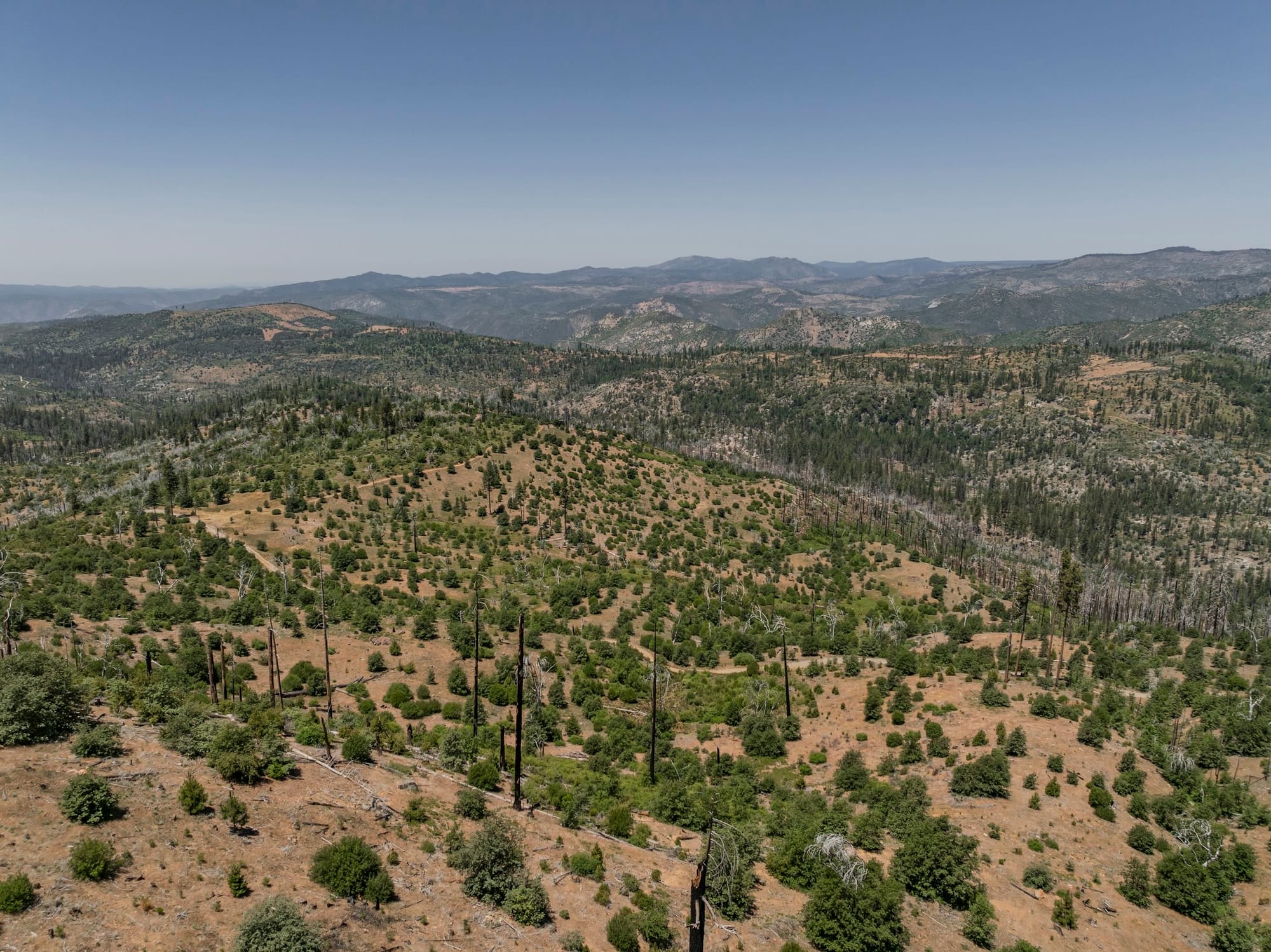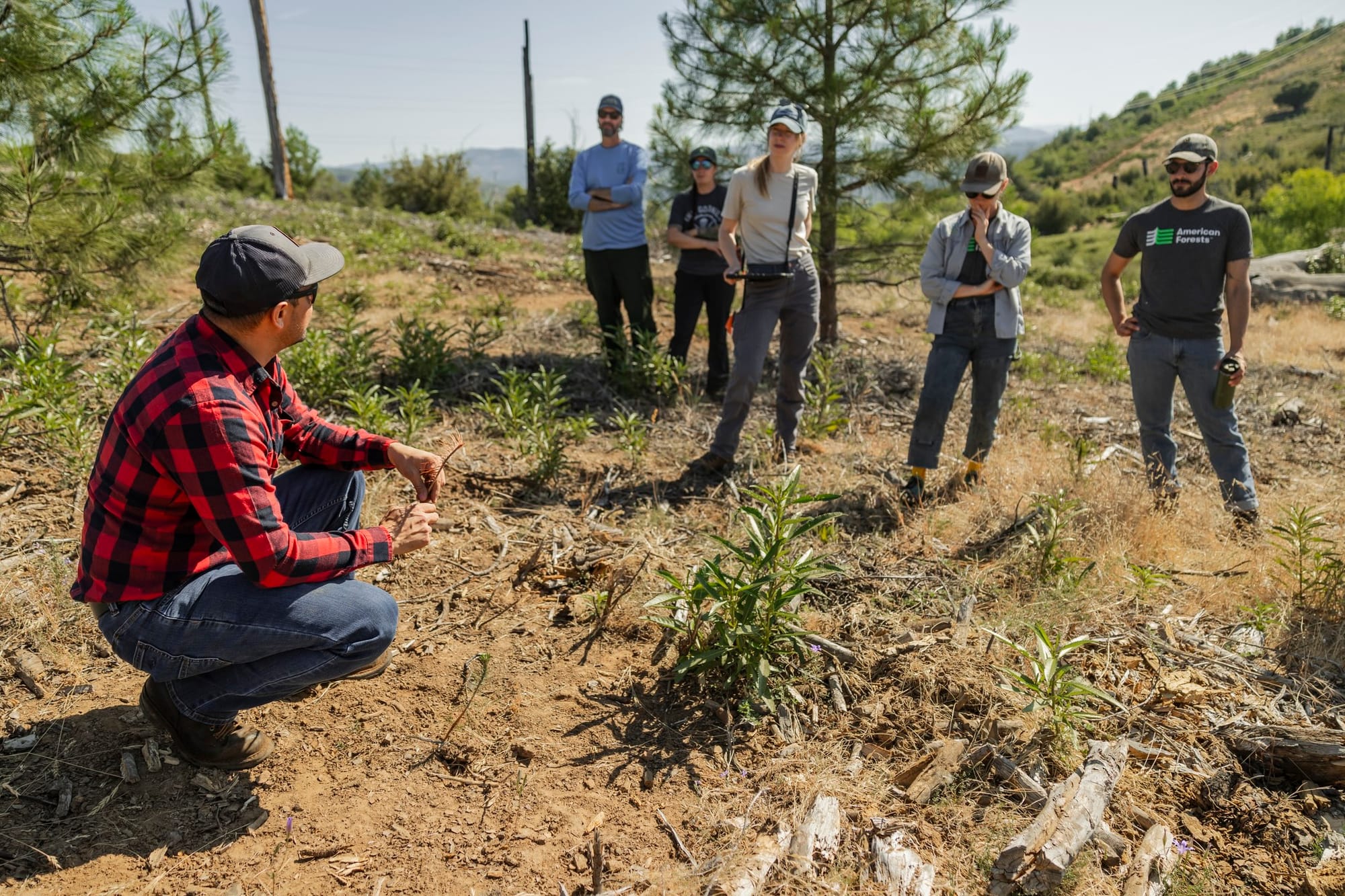The devastating wildfires in Los Angeles at the start of 2025 sent shockwaves around the world. Images of the flames encroaching on Hollywood A-listers’ mansions were a stark reminder that the climate crisis is reaching everyone. They also highlighted the impact of inaction, and the importance of proactive landscape adaptation.
Wildfires are a natural part of California’s ecology, but the climate crisis is creating hotter, drier, and more variable conditions, which continue to fuel more frequent and severe wildfires across the state. Which is why we've launched a new project to scale science-based restoration in one of California’s most essential forest landscapes.
Restoring a diverse and resilient forest
We've partnered with U.S. conservation nonprofit American Forests to plant 125,000 trees throughout May and June in the Rim Fire burn scar in the Sierra Nevada mountains. The Rim Fire in 2013 was one of the state's largest wildfires to date.

Our approach is to focus on long-term forest health, shifting away from reactive disaster recovery to proactive landscape adaptation. To do this we’ve planted fire-resilient native tree species like the sequoia, which serve as a natural defense against increasingly erratic wildfire conditions, while also enhancing biodiversity and cooling the surrounding environment. The project also supports wider efforts to secure clean water resources for the greater Los Angeles region.
As always our trees will be closely monitored, with geotagged photo documentation, species-specific planting data, and transparent reporting due by mid-2025.
Building on our work in California
Since 2022, we’ve supported urban greening in Los Angeles through partnerships with City Plants and helped restore post-fire landscapes in collaboration with the American Forest Foundation and CTS Conservation. These projects have not only cooled urban areas and improved local air quality but also helped to reduce fire risk both within and beyond city limits.
This new project extends our work beyond LA’s metro area to broader source watershed treatments. By supporting both urban and wildland reforestation, we can create living firebreaks that cool cities, protect biodiversity, and build long-term climate resilience.

Rolling back public protections can’t put a stop to climate action
Now more than ever, projects like this are especially critical. Recent policy shifts have weakened environmental protections across the U.S., including opening up 280 million acres of national forests to commercial logging, and significant federal budget cuts to parks and firefighting agencies.
With institutional support hanging in the balance, it’s up to private actors to step in and fund community-led restoration at scale. We hope this partnership and project will inspire similar restoration efforts across fire-vulnerable regions in the U.S.
